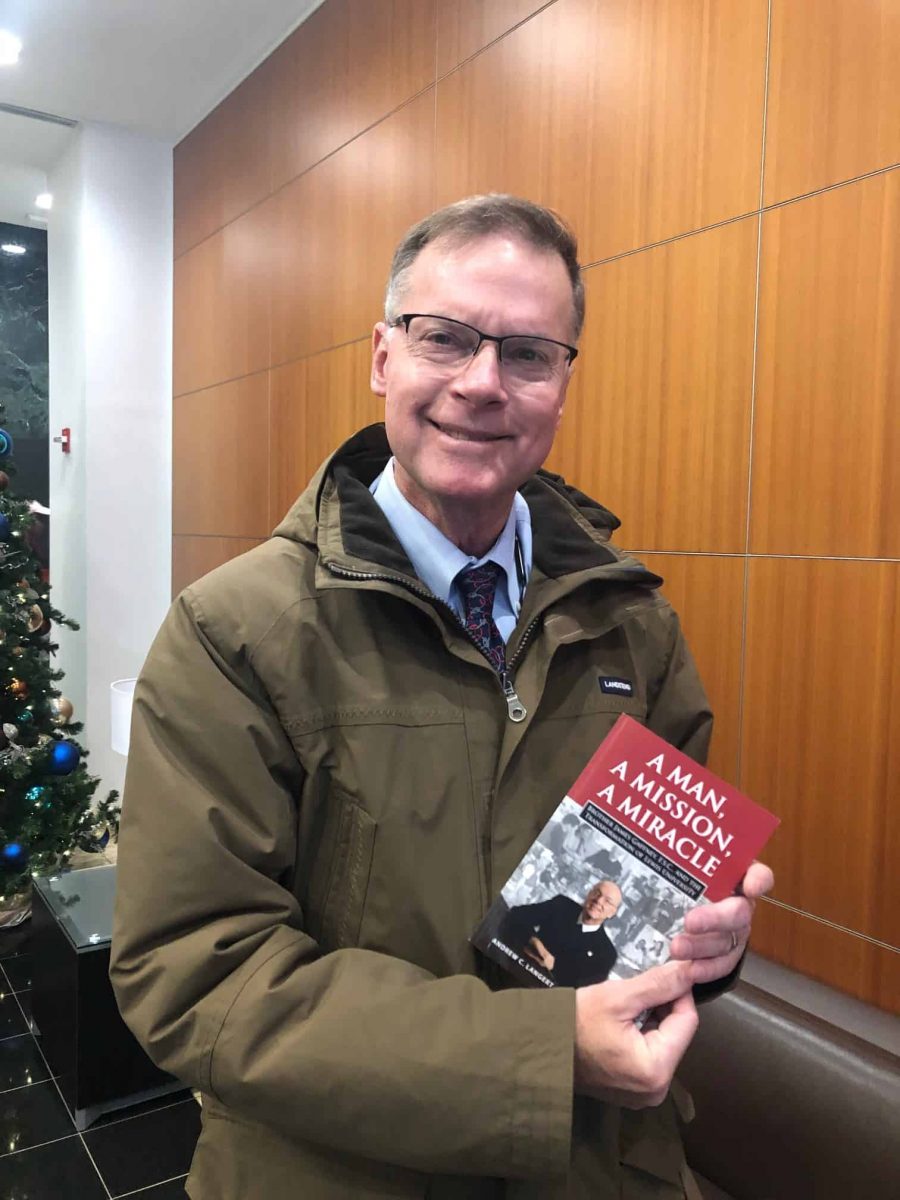
Andrew C. Langert is the author of A Man, A Mission, A Miracle: Brother James Gaffney F.S.C and the Transformation of Lewis University.
Q: Obviously, you have a very strong connection with Lewis University. Tell us about your history with the school.
Andy: I earned my bachelor’s degree in Business Administration from Lewis. For two years, I lived on the same floor as Brother James Gaffney and we became friends then. He, among his other duties with the Brothers, was studying for his doctorate at Northwestern University. A few years later, after earning my master’s degree at Illinois Institute of Technology, I taught evening accounting courses at Lewis. My career took me away from Chicago for several years. When I returned in the 1990s, I joined the Lewis Board of Trustees and served on it for 16 years.
Q: What prompted you to write the book?
Andy: The story of Brother James Gaffney and Lewis University is an incredibly positive story. Though Brother James is revered almost universally by people who he associates with, not enough people know the full story. Above all, I wanted to document what was accomplished for the benefit of Brother James, his family and the many people who contributed to the growth and success of Lewis.
Q: This is an extremely comprehensive account of the 28 years Brother James was president at Lewis. What kind of research and resources did you use while writing the book?
Andy: Dr. David Livingston, current Lewis President, gave me access to Lewis personnel and its rich archives. I interviewed close to 50 people, including several from the business and religious community outside of Lewis. Of course, I had numerous interview sessions with Brother James. Thanks to Brother Bernard Rapp’s efforts, the archives are well-organized and full of useful historic information contained in University publications and reports.
Q: The university faced some significant financial hardships before Brother James took over in 1988. Can you briefly tell us some of ways Brother James helped get the university on firmer financial ground?
Andy: In the late 1970s, Lewis was deep in debt, it enrollment was declining and it had no more borrowing power. Brother James, who was then Chairman of the Board of Trustees (still years away from becoming President), was able to borrow from other religious communities, largely on his own good name and reputation. Once the University survived this scare, the Brothers took back day-to-day leadership of the University from lay leaders. Sound financial management practices were established. But the sale of some real estate assets and, most importantly, growing enrollment enable Lewis to repay its debts. As confidence in the University built, it became possible to raise money from alumni and the outside community through ongoing advancement efforts.
Q: You dedicated a chapter on how Brother James leads. Can you give us a couple of examples that is indicative of his remarkable leadership? What can others learn from his style?
Andy: The Christian Brothers and Lewis University have a clear, well-defined Mission. Brother James promotes and adheres to that Mission. Strategic plans flow from the Mission. Strategic metrics were established to ensure Lewis focused on what was important.
Brother James was very student-centered. It was always clear that his efforts were for the students. That approach was contagious. Brother James had a very collegial style of leadership. The book chronicles how he encouraged and supported many other successful leaders at Lewis.
Brother James was always highly visible all around the campus, though he was very unpretentious and approachable.
Q: What’s next for Lewis University?
Andy: Anyone who knows the history of Lewis had to be somewhat worried when it became evident that the successor to Brother James would not be a Christian Brother. Lewis almost collapsed in the 1970s under lay leadership. Since 1982, a Christian Brother had been the President of Lewis.
By all accounts, Dr. David Livingston has been the ideal successor to Brother James, taking office in 2016. The Mission remains strong. Academic programs are thriving and expanding in areas of study that are currently most appealing. Marketing efforts have been modified to cope with very unfavorable demographic trends, trends that are causing neighboring schools to experience significant enrollment declines.
In short, Lewis is demonstrating that it is able to build upon the strong base created during Brother James’ 28 years as President. It has a very unique and attractive culture for students. The Lasallian Christian Brothers have become very adept at collaborating with lay leaders nowadays. All of them are considered Lasallians.
Just finished reading the book. What a great tribute to Brother James and the legacy he created at Lewis University. Every administrator of small colleges and universities should read the book to learn some guiding principles that helped Brother James transform Lewis. Great work by Andrew C. Langert in bringing to light the story of Lewis University and Brother James Gaffney.